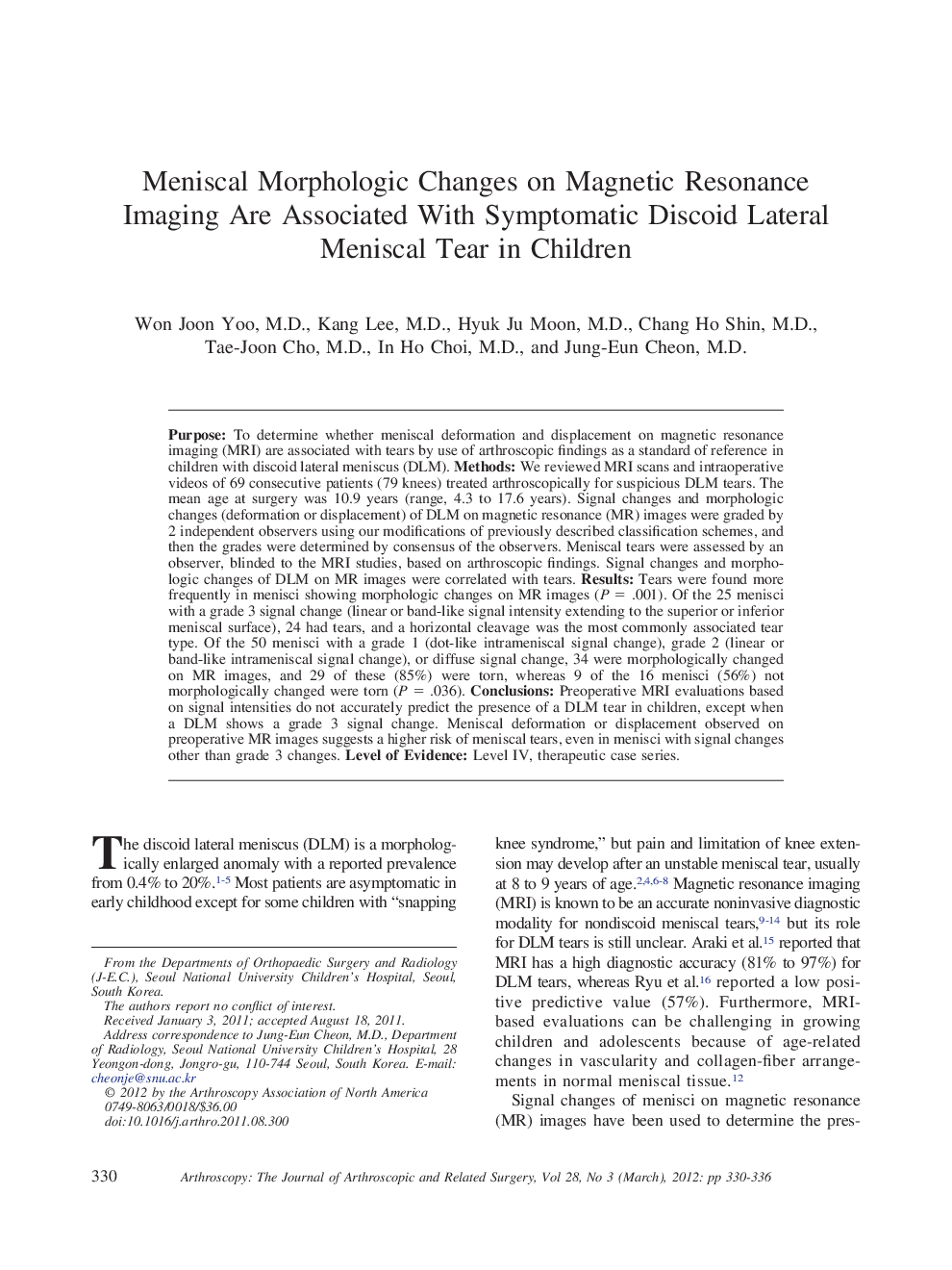| Article ID | Journal | Published Year | Pages | File Type |
|---|---|---|---|---|
| 4044809 | Arthroscopy: The Journal of Arthroscopic & Related Surgery | 2012 | 7 Pages |
PurposeTo determine whether meniscal deformation and displacement on magnetic resonance imaging (MRI) are associated with tears by use of arthroscopic findings as a standard of reference in children with discoid lateral meniscus (DLM).MethodsWe reviewed MRI scans and intraoperative videos of 69 consecutive patients (79 knees) treated arthroscopically for suspicious DLM tears. The mean age at surgery was 10.9 years (range, 4.3 to 17.6 years). Signal changes and morphologic changes (deformation or displacement) of DLM on magnetic resonance (MR) images were graded by 2 independent observers using our modifications of previously described classification schemes, and then the grades were determined by consensus of the observers. Meniscal tears were assessed by an observer, blinded to the MRI studies, based on arthroscopic findings. Signal changes and morphologic changes of DLM on MR images were correlated with tears.ResultsTears were found more frequently in menisci showing morphologic changes on MR images (P = .001). Of the 25 menisci with a grade 3 signal change (linear or band-like signal intensity extending to the superior or inferior meniscal surface), 24 had tears, and a horizontal cleavage was the most commonly associated tear type. Of the 50 menisci with a grade 1 (dot-like intrameniscal signal change), grade 2 (linear or band-like intrameniscal signal change), or diffuse signal change, 34 were morphologically changed on MR images, and 29 of these (85%) were torn, whereas 9 of the 16 menisci (56%) not morphologically changed were torn (P = .036).ConclusionsPreoperative MRI evaluations based on signal intensities do not accurately predict the presence of a DLM tear in children, except when a DLM shows a grade 3 signal change. Meniscal deformation or displacement observed on preoperative MR images suggests a higher risk of meniscal tears, even in menisci with signal changes other than grade 3 changes.Level of EvidenceLevel IV, therapeutic case series.
